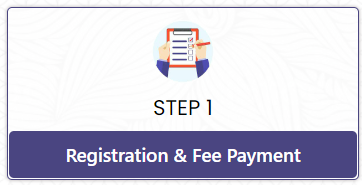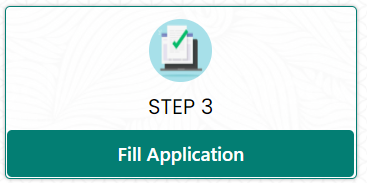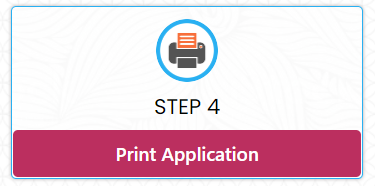VILLAGE SECRETARIAT (GENERAL / LIMITED RECRUITMENT FOR THE POST OF ANIMAL HUSBANDRY ASSISTANT) (AP Animal Husbandry Subordinate Services )
CONTESTS

Applications are invited online for recruitment to the post of Animal Husbandry Assistant (1896 posts) in A.P. Animal Husbandry Subordinate Services from eligible candidates within the age group of 18 to 42 years as on 01.07.2023. The Animal Husbandry Assistant post carries the pay scale of Rs.22460 – 72810 in RPS 2022.
The details of vacancies
District ———No. of vacancies
ANANTHAPUR———473
CHITTOOR——— 100
KURNOOL——— 252
YSR KADAPA ———210
SPSR NELLORE——— 143
PRAKASHAM——— 177
GUNTUR ———229
KRISHNA ———120
WEST GODAVARI ———102
EAST GODAVARI——— 15
VISAKHAPATNAM——— 28
VIZIANAGARAM——— 13
SRIKAKULAM ———34
Total——— 1896
SALARY
The selected candidates will be given a consolidation pay of Rs.15 thousand during the probation period of two years. After that, Rs.22,460 will be given each.
IMPORTANT LINKS
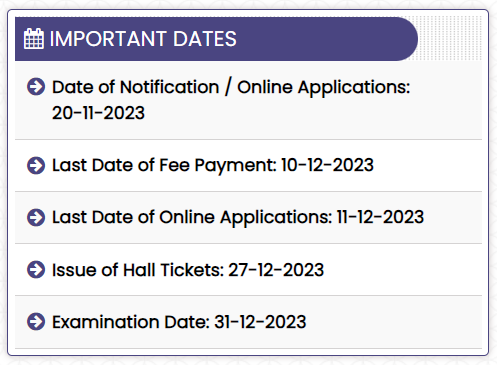
ELIGIBILITY
i. He / She shall be eligible as per the details specified in the notification published in the website “ahd.aptonline.in or https://apaharecruitment.aptonline.in” on 20-11-2023.
ii. He / She is of sound health, active habits and free from any bodily defect or infirmity rendering his / her unfit for such service:,
iii. He / She character and antecedents are such as to qualify his / her for such service:,
iv. He /She possesses the academic and other qualifications prescribed for the post: and
v. He/ She is a citizen of India and resident of Andhra Pradesh.
EDUCATIONAL QUALIFICATIONS:
A candidate should possess the prescribed academic qualifications for the post as on the date of this notification for direct recruitment.
1) Two years Animal Husbandry Polytechnic Course conducted by Sri Venkateswara Veterinary University, Tirupati.
2) Intermediate Vocational course in Dairying and Poultry Sciences as one of the subjects of study / two years Poultry Diploma Course conducted by the Polytechnic College Ramachandrapuram of Sri Venkateswara Veterinary University, Tirupati etc., / two years Intermediate Vocational Course in Multi Purpose Veterinary Assistant (MPVA) as per the provisions of GO MS No:34
Dtd.13-09-2013 of AHDDF (AHII) Dept.
3) Intermediate vocational course with dairying Board of Intermediate Education
4) Intermediate (APOSS) with dairy farming as one vocational subject.
5) B.Sc (Dairy Science)
6) BSc with Dairy science as one of the subject study
7) MSc (Dairy Science)
8) Diploma Veterinary Science of Higher Education council of Vocational Education
9) B.Tech (Dairy Technology)
10) Diploma in Dairy Processing of SVVU
11) Diploma in Veterinary Science of Bharat Sevak Samaj, Central Board of Examinations.
12) B.Vocational course of Dairying & Animal Husbandry “Provided that the candidates selected with the qualifications shall undergo 4 months departmental intensive skill-oriented hands-on departmental training to be conducted by Department of Animal Husbandry”
AGE:
No person shall be eligible for direct recruitment if he/she is less than 18 years of age and if he / she is more than 42 years of age as on 01.07.2023
as per G.O.Ms.No.109,GA (Ser-A) Dept., dated:10.10.2023. Candidates should not be born earlier than 01.07.1981 and not later than 01.07.2005.
Age Relaxation is applicable to the categories as detailed below
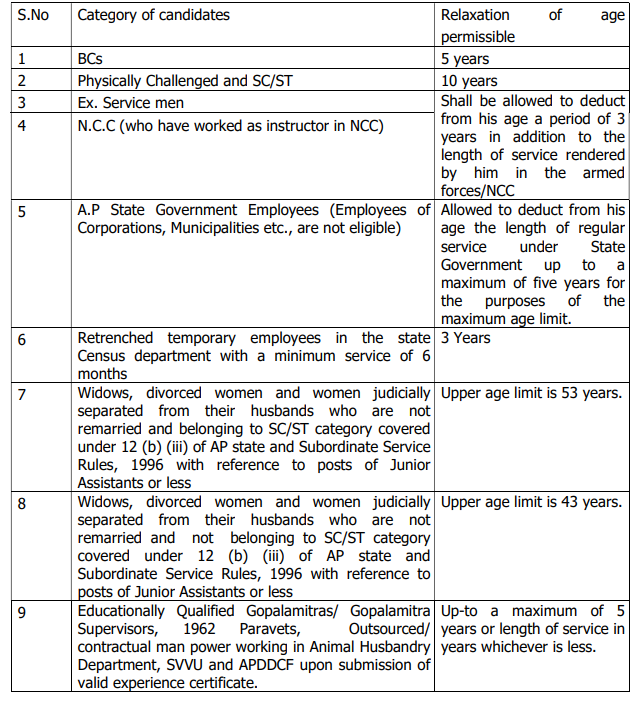
FEE:
- Applicant must pay Rs. 1,000/- (Rupees One thousand only) towards application and examination fee.
i) The candidate applying as non local candidate in addition to his/her local district will be charged an additional fee of Rs. 1000/- per district (Maximum of 3 districts).
Fee Structure

MODE OF PAYMENT
i) The fee mentioned in the above paragraph is to be paid online using payment gateway using UPI / net banking / credit card / debit card. The list of banks providing service for the purpose of online remittance of fee will be available on the website.
ii) The fee once remitted shall not be refunded or adjusted under any circumstances.
iii) IPOs / Demand Drafts are not accepted.
SCHEME OF EXAMINATION:-
The Scheme and Syllabus for the Computer based Examination
Examination Pattern – ANIMAL HUSBANDRY ASSISTANT

Note: 1. Exam paper will be bilingual (English & Telugu).
2. For each correct answer 1 mark will be awarded and each wrong answer will carry 1/3rd of the marks prescribed questions as per G.O.Ms.No.235 Finance (HR-I, Plg & Policy) Department, dt.06.12.2016.
SYLLABUS FOR EXIMANITION
THE POST OF ANIMAL HUSBANDRY ASSISTANT WILL BE DIPLOMA STANDARD WHICH WILL INCLUDE FOLLOWING TOPICS
PART-A
GENERAL STUDIES AND MENTAL ABILITY
1. General Mental ability and reasoning.
2. Quantitative aptitude including data interpretation.
3. General English.
4. Current affairs of regional, national and International importance.
5. General Science and its applications to the day to day life, Contemporary development in science and Technology and information Technology.
6. History & Culture of India with specific focus on AP.
7. Indian polity and governance: constitutional issues, 73/74th Amendments, public policy, reforms ad centre – state relations with specific reference to Andhra Pradesh.
8. Society, Social justice, rights issues.
9. Physical geography of Indian sub-continent and Andhra Pradesh.
10.Key welfare & development schemes of Government of Andhra Pradesh.
PART-B
COMMON SYLLABUS PRESCRIBED FOR THE WRITTEN EXAMINATION TO BE
CONDUCTED FOR ANIMAL HUSBANDRY ASSISTANT POSTS IN ANIMAL HUSBANDRY
DEPARTMENT
1. Basics in Veterinary anatomy and Physiology: Major bones and joints of Animals, Important organs & functions of Digestive, Respiratory, Circulatory, Urinary, Genital, Nervous and endocrine system.
2. Infectious Diseases of Livestock Poultry: Characteristics of different infectious agents, Bacteria, Virus, parasite (external & Internal), Transmission of diseases of Livestock poultry Bacterial Diseases: Anthrax, HS, BQ, Mastitis, TB, JD, Brucellosis, Pullorum Disease, fowl Cholera. Viral: PPR, FMD, POX, Rabies, RD, IB, ILT, Gambaro. Parasitic: Ascariasis, Strongylosis, Amphistomiasis, mange, ticks, lice. Fungal: Ring Worm,Vaccines for infectious diseases General hygiene prevention & control measures of infectious diseases of livestock & poultry
3. Veterinary Pharmacy: Drugs, forms, weighing, measuring (units) routes of administration of drugs, oral parenteral ( SC, IM, IV) Forms of drugs – Powders, mixtures, lotion, ointment, paste, tablet, electuary, enema, tinctures, bolus, emulsion, Standards of drug manufacturing I.P, B.P., B.Vet.C.,
4. Fundamentals of Animal reproduction and Gynaecology: Genital organs of different livestock species, sexual maturity, estrus cycle,
gestation, pregnancy diagnosis, parturition, infertility and sterility and their treatment, common reproductive disorders – Dystocia & Retention of placenta
5. Basics in artificial insemination: Advantages of AI, Preparation of AV, Semen collection, Management of Frozen semen, Handling f liquid nitrogen container, detection of heat in different livestock, insemination techniques, precautions for successful AI, follow up of AI
6. Basics in Surgery: General surgical conditions – abscesses, wounds, fractures.Antiseptics & disinfectants.Pre-operative & Post operative surgical care.Surgical pack preparation.Sterilisation techniques.Castration & different bandaging techniques.
7. Fundamentals of Veterinary Medicine: Definition of Health, disease, symptoms.Physical & clinical examination of animals.Collection of History. General Diagnosis, treatment and control of diseases of gastrointestinal tract, liver, respiratory system, skin, Uro-genital tract, nervous system, metabolic and deficiency diseases
8. Introduction of Veterinary Biological and Vaccines: Veterinary Biologicals and their importance in Veterinary practice.Handling& storage of various Biologicals.Vaccination schedule for livestock and poultry.
9. Veterinary First Aid and clinical Management: Restraining of various Livestock species.Registration of cases.History taking,
Recording of Body temperature, pulse and respiration. Methods of medication, (Oral and Parental) First aid measures in emergency cases. Collection & dispatch of clinical samples.
10. Analytical Laboratory Techniques: Common equipment for laboratory analysis, guidelines for handling chemicals & equipment, disposal of laboratory wastes. Sampling and sample preparation for chemical analysis.
11. Laboratory Diagnostic Techniques – Sterilization techniques of laboratory chemicals and glass ware. Media preparation, sero diagnosis – antigen, antibody.
12. Laboratory Diagnostic Techniques – II Collection, preservation & dispatch of various materials for parasitological examination – Skin scrapings, etc.
13. Dairy Management: Importance of Milk – Advantages of Dairy farming important breeds of cattle & Buffaloes. Important exotic dairy cattle. Importance of cross breeding. Advantages of cross bred cows and upgrading of buffaloes. Ideal dairy animals. Dairy Farm practices. Feeding and Management of different classes of dairy animals. Milking methods. Clean Milk production. Importance of Colostrum. Housing of dairy animals. Identification of Dairy animals. Package of practices in calf rearing. Heifer rearing. Management of high yielding cows and buffaloes. Composition and Chemical properties of milk. Farm records and their
maintenance. Bio gas production. Economics of Dairy Farming. Role of Milk cooperatives. Milk Chilling, Pasteurisation in milk – Important products. Marketing of dairy cattle, milk & milk products, important dairy products.
14. Principles of management of Meat animals Importance of meat producing animals – sheep, goat, swine and rabbits. Popular breeds of sheep, goat & swine and their characters. Breeding. Mating practices, feeding and general management & guidelines. Care and management of pregnant & lactating animals. Rearing of lambs, kids and piglets. Housing of sheep, goat, & swine. Debugging, docking, castration, vaccination, deworming, deticking in meat animals – Marketing of Live meat animals – Livestock insurance.
15. Livestock Farm Management: Livestock farming vs mixed farming, record keeping, farm inventory marketing of Livestock & Livestock products, distribution channels, organization of cooperative societies.
16. Principles of Livestock feeding: Importance of feeding – classification of feeds and fodders – importance of cultivated fodder & legumes, roughages & concentrates – chaffing of fodder- preparation of concentrate mixture – Formulation of rations- fodder conservation (Hay & Silage making) – common crop residues in animal feeding. Important fodder trees. Animal feeding &
drought and natural calamities – storage feeds – Thumb rules for Livestock feeding – Urea treated paddy straw.
17. Basics of Pet & Zoo animals management : Common pet animals and their utility, common breeds of dogs, handling & restraining of pet animals Feeding & Management of dogs, important zoo animals – care, management & health cover of zoo animals Vaccination
schedule, deworming – administration of medicines in different routes in dogs and cats
18. Avian Hatchery Management: Layout of Hatchery- incubators- setters – Hatchery incubation – management. Hatching eggs – Collection , selection and storage – fumigation – requirement of incubation – temperature, humidity , ventilation, turning candling of eggs – sexing , vaccination, grading of chicks, dubbing and toy clipping.
19. Poultry Management: Advantages of Poultry farming – present status of poultry industry – different breeds – system of poultry rearing – advantages and disadvantages – poultry farm equipment – breeding management – feeding and
management of different classes of poultry – feed supplements – additives – mixing of poultry feeds – measure of sanitation – disinfection and disease control – Reconstitution of vaccine and their preservation – routes of vaccination – designing of vaccination program – litter management – handling of eggs. Farm records – record keeping. Feeding management of other avian species. Economics of poultry farming (Layers& Broilers) –Marketing of poultry eggs and chicken meat.
20. Basics in Meat production & Handling: Importance of meat yielding animals – Selection of ideal meat animals – optimum for slaughter – common instruments used to handle meat animals – dressing percentage- transportation of meat animals – care during transport – pre-slaughter handling – methods of slaughter – major cuts and their yields – components of abattoir – optimum facilities principles of meat preservation – ageing of differing species of Livestock.

